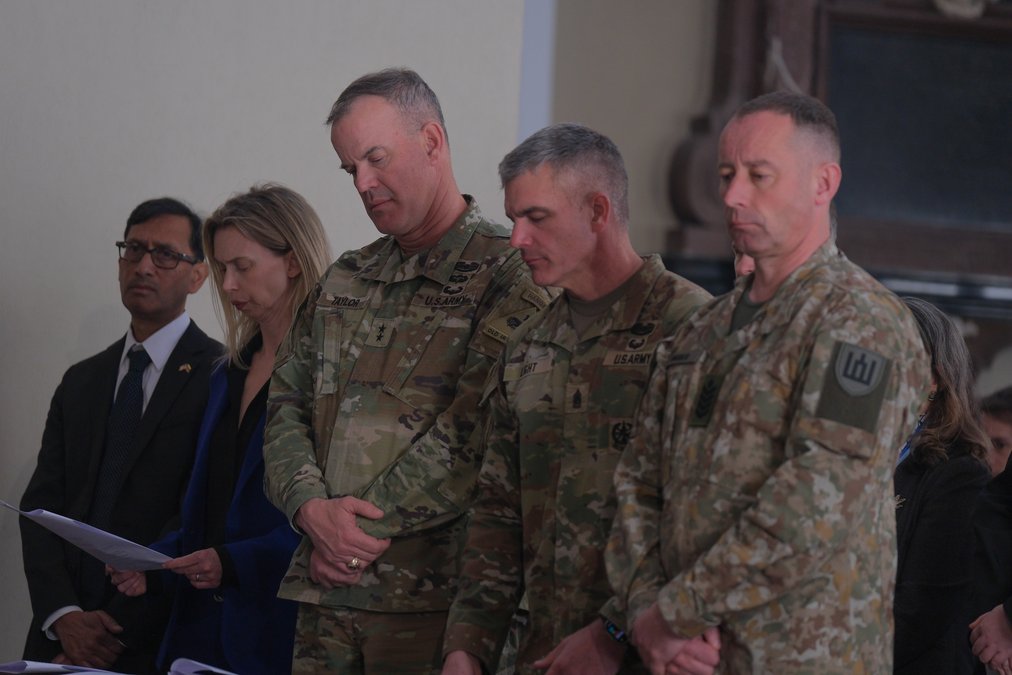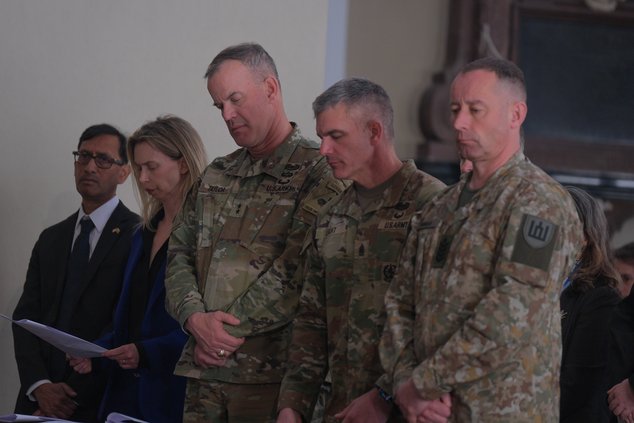U.S. Navy divers have attached a line to one of the hoist points on an M88A2 Hercules recovery vehicle that has been missing in Lithuania since Tuesday.
Once a second line is shackled, engineers can begin to anchor the Hercules and keep it from sinking further into the bog. The vehicle’s four-man crew are all soldiers in the 1st Brigade of the 3rd Infantry Division. The missing soldiers are on a nine-month deployment to eastern Europe.
Teams on site can begin winching operations to try to pull the vehicle out of the mud as additional hoist points are located and shackled. Officials from the U.S. Army’s Europe and Africa Command expect that process to take some time, as the amount of pressure and suction from the mud will take significant power to overcome.
A Mass was held Sunday morning in Lithuania at the Vilnius Cathedral Basilica for the four missing soldiers and the rescue and recovery teams.
Equipment, resources, and personnel have been flowing to the recovery site as operations are ongoing to find the four soldiers missing since the morning of March 25. The M88A2 Hercules they were operating has continued to sink into the bog, and was assessed to be around four meters below the water’s surface and encased in about two meters of mud.
Digging and pumping operations are continuing. A Rapidly Available Interface for Trans-loading (RAIL) system is expected to arrive this afternoon to enable the use of heavier equipment around the site.
The RAIL system is an expeditionary platform used to provide a rapidly constructed and scalable capability platform. Traditionally used to facilitate offloading and onloading railroad networks in challenging terrain, engineers requested the system to help stabilize the ground around the recovery site. Soldiers assigned to the U.S. Army 21st Theater Sustainment Command (TSC) are transporting the system from Kaiserslautern, Germany.
“It is highly complex trying to get to the vehicle itself with the terrain out here and where the M88 is sitting in a bog swamp-like area, below the waterline. So not only are we dealing with the terrain, a lot of mud that is over top of the vehicle, but also the fact that it's 70 tons that we're trying to recover out of a swamp or bog,” said Brig. Gen. John Lloyd, commander of the U.S. Army Corps of Engineers North Atlantic Division. “Last night, divers were in the water trying to get to the vehicle. We were unable to because of the amount of mud. We continue to work on the excavation and pumping all the water out of the bog and also using excavation equipment to try to get to the vehicle.”
U.S. Navy divers from Commander, Task Force 68 arrived on site Saturday, and made their initial dive in the early evening. They have continued diving operations as the recovery mission continues.
Rescue workers also attempted to locate the Hercules on sonar, and subject matter experts determined that a special device called a “subsurface profiler” was needed. Within one hour, the Lithuanian government had located a company that owned one, and sent the operator and equipment to the Vilnius airport to link up with a UH-60 Blackhawk from 1st Armored Division’s Combat Aviation Brigade for transport to the recovery site. Six hours after identifying the need, the device was in the water.
As hundreds of soldiers and other rescue workers continue to arrive, the 21st TSC is resourcing more warming tents, high power generators, and other life support to provide recovery space for the soldiers, engineers, and other rescue personnel.
“We cannot thank our Allies enough for everything they've done for us to help find our soldiers. They see our soldiers as their own soldiers, and we are absolutely in this together. They have been extremely supportive of our families as well, knowing that they're going through a tough time,” said Col. Jim Armstrong commander of 1st Armored Brigade Combat Team, 3rd Infantry Division.
The 3rd ID is continuing to keep families of the soldiers informed on the status of recovery efforts.




